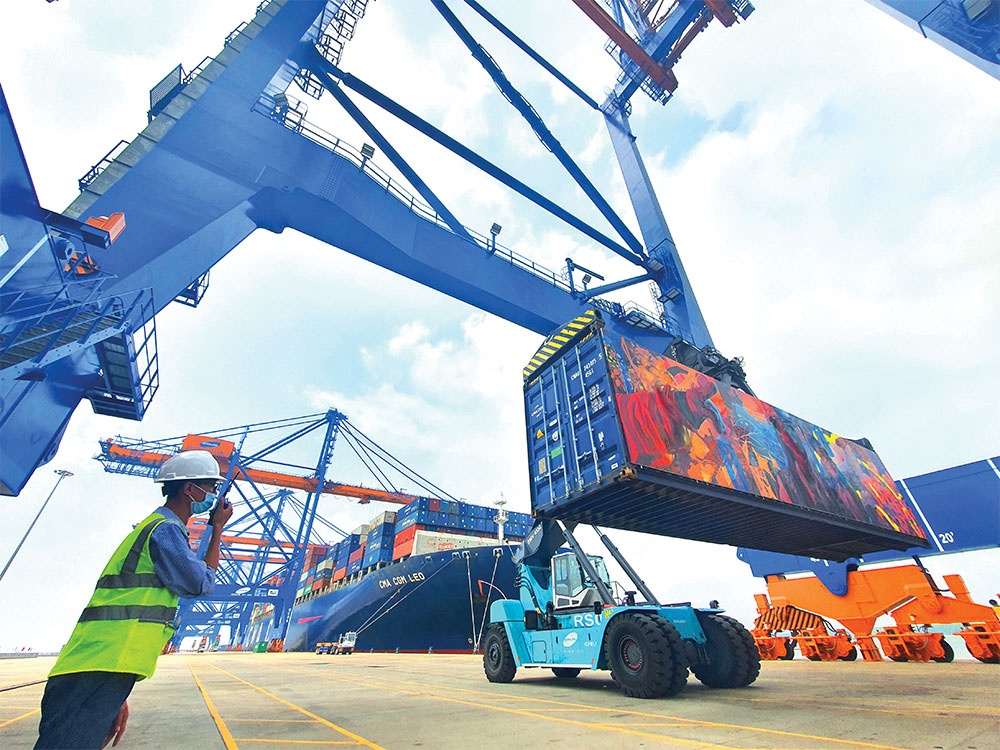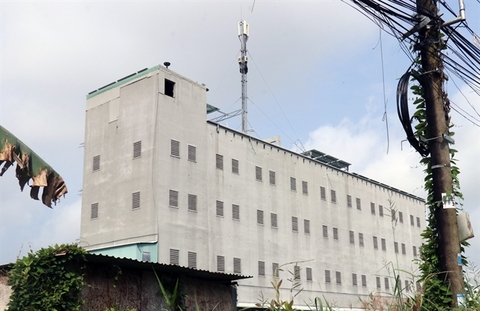Momentum for seaports hard to retain
Momentum for seaports hard to retain
While complex global developments are affecting the performance of seaports, action is needed to ensure growth momentum.

Phan Hoang Vu, deputy general director of SP-SSA International Terminal (SSIT), is worried as the market continues to face difficulties. Not long ago, SSIT renovated several yards to temporarily meet the empty container needs of shipping lines.
“A large amount of empty containers are in excess globally, including Vietnam,” said Vu. “The oversupply of containers reflects a decline in global freight demand.”
Many warehouses at seaports in the northern port city of Haiphong are filled with containers. Seaport operators have said that numerous empty containers have poured into Vietnam in recent times due to low storage costs.
The market difficulties have been forecast since late 2022 and was also evident in many seaports’ financial statements in the fourth quarter, in which they reported a fall in profit.
In the south-central region, as shown in the financial statement of Quy Nhon Port for Q4 last year, it recorded an after-tax consolidated profit of VND98.9 billion ($4.3 million), down 70 per cent over the same period the previous year.
Similarly, Cam Ranh seaport saw its net profits sit at VND5 billion ($217,400), down VND3.3 billion on-year.
A leader of Cam Ranh seaport blamed the fall on reduction of key goods being shipped that produce high profit for the port, such as wind power equipment and woodchips. Moreover, revenues from port fees from foreign ships also dropped.
In the north, the situation is similar. VIP Green Port and DinhVu Port Investment & Development both reported an on-year drop in net profit between October and December last year.
For Gemadept’s northern ports, such as Nam Dinh Vu and Nam Hai Dinh Vu ports, their volume also decreased by 1.1 and 0.9 per cent, respectively.
Vietnam Maritime Corporation (VIMC) faces similar challenges. VIMC now has 35 member companies, managing and operating over 13,000 metres of piers – nearly 30 per cent of the country’s total – and capable of handling over 100 million tonnes of cargo, over 20 per cent of the national total.
VIMC recorded revenues in this period reaching over $144.35 million, down 12 per cent on-year. Its after-tax profit reached about $9.28 million, down 86 per cent on-year. Among business lines, seaport business and maritime services decreased by 11 per cent over the same period last year.
According to the corporation, inflation has had a significant impact on global consumer demand and freight activities. Freight rates began to fall deeply since June 2022, while the oversupply of containers is becoming a bigger issue due to the continuous decrease in global consumption demand, as well as tightened spending.
“The market and output of some key products of VIMC such as iron, steel, and animal feed dropped sharply. The port system was not also unable to exploit wind power equipment as it did in 2021 because projects are currently paused while waiting for the government’s new policy,” a VIMC representative explained.
Ho Kim Lan, secretary general of the Vietnam Seaports Association, said that the amount of cargo moving through seaports decreased more than expected last year, especially in the fourth quarter. The global complexities of the past two years have resonated and are now affecting the shipment of goods.
“Complicated global developments and how long they will impact Vietnam is hard to predict. Therefore, it is important to have internal economic resources as well the state’s supporting policies and guidelines for the economy and seaport enterprises,” Lan said.
According to the General Statistics Office, the country’s total trade turnover was estimated to have reached $96.06 billion in the first two months of 2023, down 13.2 per cent on-year, of which exports fell 10.4 per cent and imports down 16 per cent.
“Two existing key points facing seaports that need to be solved now are to clear the creeks to operate ships efficiently and to raise the price of container handling services at seaports. Currently, Vietnam’s seaport service rates are among the lowest in the region,” Lan added.
Phan of SSIT said that low service rates are also competitive. But this also makes businesses suffer. “The state should create a mechanism so they can compete but still keep the profit margins, thus promoting the advantages of seaports,” Phan said.
Nevertheless, there are some positive signals that bring hope to seaports for the next quarter. China’s reopening is likely to increase import-export volume from Vietnam. Moreover, some shipping carriers plan to open more Vietnam - China - Japan routes, and others. For instance, in January, CMA CGM, one of the world’s largest container shipping companies, officially resumed the Nghi Son seaport route in the north-central province of Thanh Hoa after a year of interruption.
Industry insiders predicted that the market will prosper from the second quarter of 2023 and reach a growth rate of 5 per cent in 2023.
Port operators who take right and timely actions can keep growth this year. Nguyen Manh Ha, director of Nam Dinh Vu Port, said that his business has invested in more loading and unloading equipment to improve productivity and shorten the time of ship operation.
“The port also expanded by 20 hectares to improve cargo handling capacity, as well as upgrade software, and invest in IT, all towards building a smart port and the centre of Dinh Vu with a high level of automation and energy saving,” he said.


















